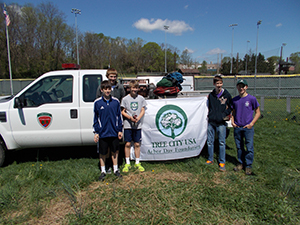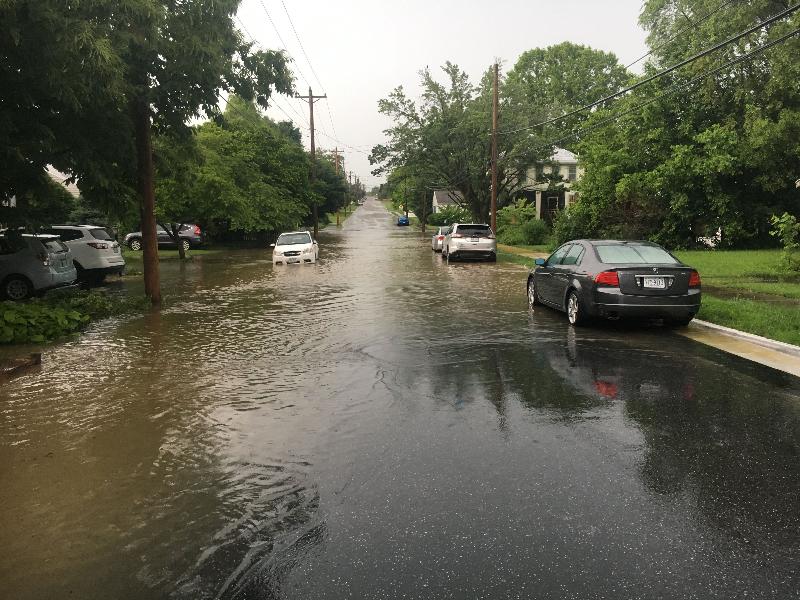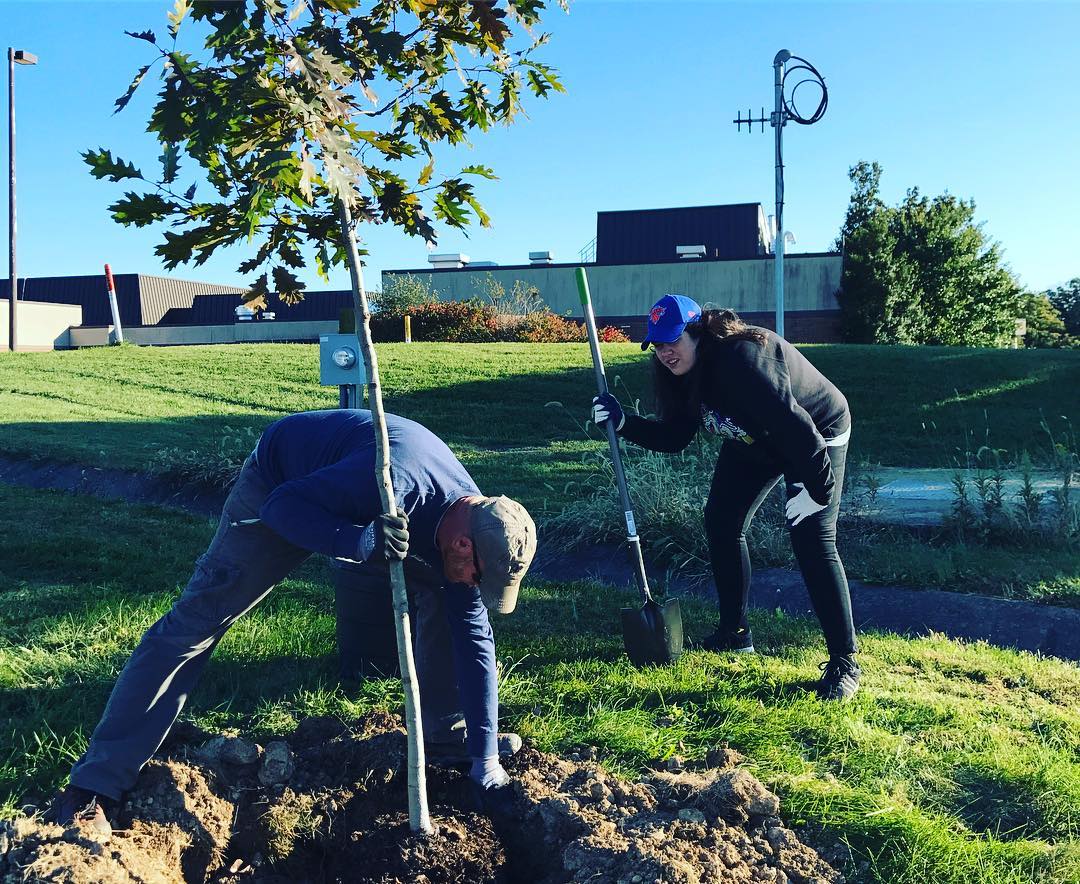Study Promotes Trees as Green Infrastructure to Address Rising Stormwater Challenges
-

- Photo courtesy of Jeremy Harold
The Harrisonburg, Virginia, urban forestry program has found new momentum. In 2017, the city had just lost Tree City USA status, which it had held for the previous 13 years, due to the loss of staff and program funding. In addition, emerald ash borer had arrived in the city and was decimating city streets and parks, which were overstocked with ash trees.
Then, a couple of things occurred that brought new energy and impetus to the urban forestry program. First, the Chesapeake Bay Total Maximum Daily Load program, a comprehensive "pollution diet" to restore clean water in the Chesapeake Bay and the region's waterways, began giving credits for planting urban trees to mitigate stormwater runoff. This allowed the city to plant trees in place of having to purchase more expensive nutrient credits to meet state-mandated goals for reducing pollution from runoff.
Second, the city participated in the Trees to Offset Stormwater study, which was funded by a Landscape Scale Restoration Program grant from the Southern Region of the U.S. Forest Service and implemented by the nonprofit Green Infrastructure Center Inc. (GIC).
-

- Photo courtesy of Jeremy Harold
Jeremy Harold, the superintendent of parks for Harrisonburg, said the need to replace the lost ash trees and the opportunities provided by the TDML credits spurred renewed interest in the urban forestry program and helped support new joint projects launched by the Department of Parks and Recreation and the Public Works Department focused on stormwater mitigation.
“The study helped the whole city become more engaged in urban forestry practices and allowed the urban forestry program to gain more traction and momentum,” said Harold. “We’ve been talking about trees in Harrisonburg over the last two years more than the past 16 years.”
Karen Firehock, the executive director of GIC, said the study was designed to address the accelerating rate of tree loss across the South and increasing stormwater problems related to urban development, increased impervious surface, and climate change. GIC partnered with state forestry agencies in Florida, Alabama, Georgia, North and South Carolina and Virginia to implement the study in 12 communities (Apex and Wilmington, North Carolina; Orange County, Miami Beach, and Jacksonville, Florida; Norcross and Alpharetta, Georgia; Harrisonburg, Lynchburg, and Norfolk, Virginia; Charleston, South Carolina; and Auburn, Alabama).
-

- Photo courtesy of Jeremy Harold
“Our urban forest provides us with a ready-made solution to many of our urban flooding and stormwater problems,” said Firehock. “The challenge is that a lot of communities have not mapped their natural resources and they don't think of them as their green infrastructure.”
GIC mapped tree canopy for the communities, and modeled stormwater interception and uptake by each community’s tree canopy, along with evaluating the programs, policies, and practices that cause each city to be more impervious or pervious. GIC also reviewed the quality and scope of each community’s urban forest management program. The GIC provided each community with maps showing: land cover and tree canopy, plantable areas and a tool to calculate planting costs, and optimal places for tree canopy retention or planting for stormwater uptake. A Trees and Stormwater Calculator Tool was developed to show each community how much water trees currently soak up based on different storm events and reductions in nitrogen, phosphorus, and sediment runoff.
“The stormwater calculator tool is a great tool to use to figure out how much water our trees are soaking up and also to figure out where to plant trees,” said Firehock. “But it's also important that cities address the policies they use to manage their urban forest or the policies that are addressing how much they pave their city — if you plant 400 trees in one part of the city but you have outdated parking standards and you just paved 20 acres, then you didn't really get ahead. So, we are really trying to emphasize the importance of not just looking at tree planting but also planning.”
GIC has also received another grant from the U.S. Forest Service Southern Region to create a tree planning and planting decision guide to demonstrate the most effective tactics for conserving trees, setting realistic canopy conservation and planting goals and supporting community-based planting campaigns to encourage tree conservation and planting on private property. Firehock said the decision guide will also include media components that are commonly needed, such as flyers, bumper stickers, PSAs, key messages, door hangers, brochures, tree price tags, etc. These will be available for download so a community can customize them for local use.
For more information and new tools check out the following resources:
- Protecting and Restoring Urban Tree Canopy for Stormwater Management
- Trees to Offset Stormwater: A Study of 12 Communities
Feb 04, 2020





